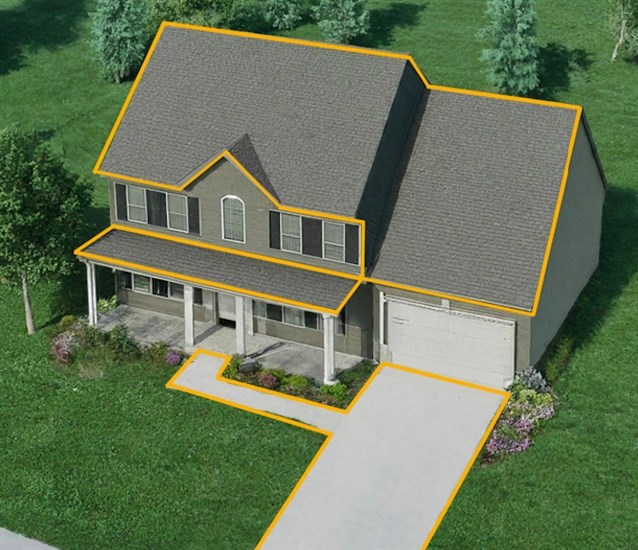Bigger houses, driveways in Kelowna may trigger increased stormwater costs
The City of Kelowna is looking at changing the way it charges homeowners for the rain and melted snow that runs off their properties.
That could mean having aerial photos taken of all the homes in Kelowna so calculations can be made on what percentage of the property is impervious – meaning it is covered with buildings, driveways, sidewalks or other solid surfaces.
“People have always been paying for stormwater management services in the city,” Jim Hager, city design technician, told iNFOnews.ca. “Right now, it’s based entirely on the assessed value of your home and it really has nothing to do with actual impact to your property.”
One of two options being put out for public feedback is to have all residential properties with six or fewer units pay the same rate per unit.
Under that option, the city’s Get Involved website says a single unit in a townhouse would pay the same rate as a single-family house.
It would also mean that a waterfront house assessed at $5 million for example would pay the same as a $1 million house a few blocks away. Currently that waterfront house would pay five times as much.
The other option would be to measure and charge by how much of a lot is covered by impervious materials because more water will run off and have to be handled through storm sewers.
That means, that waterfront house would pay the same as an inland home if the same percentage of the land was covered over.
Hager said there are lots of companies who can use aerial imagery to measure what is impervious in order to make those calculations.
“The stormwater system discharges into nearby creeks, wetlands, or directly into Okanagan Lake without going through a treatment plant,” the city’s website says. “If not managed properly, stormwater can cause water quality issues that impact our drinking water, ponding, flooding and erosion. This can lead to damaging property, roads, sidewalks, and the environment (including fish habitat).”
More and more cities in Canada and the U.S. are changing from charging for stormwater management based on assessed property value to some sort of payment structure based on how much stormwater their properties contribute, Hager said.
Changes to the fee structure for commercial and larger residential properties are also being considered.
No calculations have been made on what the cost differences would be under either system, Hager said.
Public input on the GetInvolvedKelowna.com page is open until May 3. There is also information on that page about virtual and physical open houses on the subject in April.
Any changes made to the payment structure likely won’t be implemented until 2026, Hager said.
To contact a reporter for this story, email Rob Munro or call 250-808-0143 or email the editor. You can also submit photos, videos or news tips to the newsroom and be entered to win a monthly prize draw.
We welcome your comments and opinions on our stories but play nice. We won't censor or delete comments unless they contain off-topic statements or links, unnecessary vulgarity, false facts, spam or obviously fake profiles. If you have any concerns about what you see in comments, email the editor in the link above. SUBSCRIBE to our awesome newsletter here.




